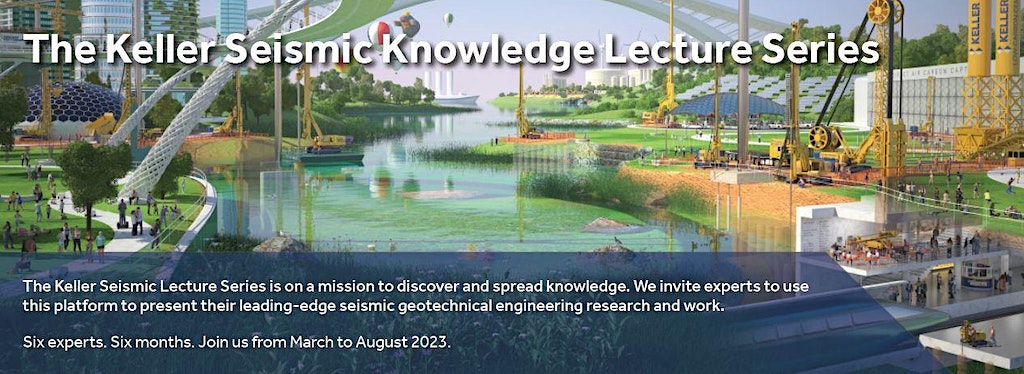The Keller Seismic Knowledge Lecture Series
June to August 2023
Virtual Webinars
Spend your summer with Keller Group! A longtime and valued supporter of EERI events, they are hosting a series of seismic seminars featuring geotechnical experts showcasing their novel research and work. Below is their remaining webinar schedule. You will earn 1 PDH credit per lecture for attending.

PROGRAM
June Lecture: Thursday, June 15th, 2023, 12pm-1pm PDT
Seismic Stability of PG&E’s Diablo Canyon Nuclear Power Plant
Jeff Bachhuber, C.E.G.
Click here to register.
Description: Jeff Bachhuber, C.E.G., will discuss the history of seismic studies and ongoing earthquake monitoring under the PG&E Long Term Seismic Program. The Diablo Canyon nuclear power plant generates 9% of California’s electric power and 20% of its carbon-free electricity. It is located in a seismically active area with a potential M7.5 earthquake. The seismic design of the plant is among the highest of any nuclear facility in the world and has a substantial safety margin. The plant has undergone multiple seismic studies, including a reassessment after the damages to the Fukushima nuclear power plant after the 2011 Tohoku earthquake.
July Lecture: Wednesday, July 19th, 2023, 12pm-1pm PDT
Application of the CPT to Evaluate Soil Liquefaction
Peter K. Robertson, Ph.D.
Click here to register.
Description: Peter K. Robertson, Ph.D., will present a brief overview of advances made in the evaluation of soil liquefaction using the CPT. Examples will be presented to illustrate how the CPT is used to evaluate both seismic and flow liquefaction. The presentation will also discuss the role of uncertainty and risk as it applies to liquefaction assessment.
August Lecture: Tuesday, August 15th, 2023, 12pm-1pm PDT
A New Probabilistic Approach to Liquefaction Susceptibility
Kevin Franke, Ph.D., PE,
Click here to register.
Description: Kevin Franke, Ph.D., PE, will present a new probabilistic procedure to assess liquefaction susceptibility and triggering for CPT-compatible soils. It eliminates the need for fines content adjustment, identifies a threshold for fine-grained soils not susceptible to liquefaction, and differentiates the liquefaction resistance of clean sands with varying mineralogy and compressibility. However, it may overpredict liquefaction-induced settlements if clean-sand volumetric strain models are inappropriately applied to clayey soils. Practical guidance is provided for handling clayey soils predicted to “liquefy.”

